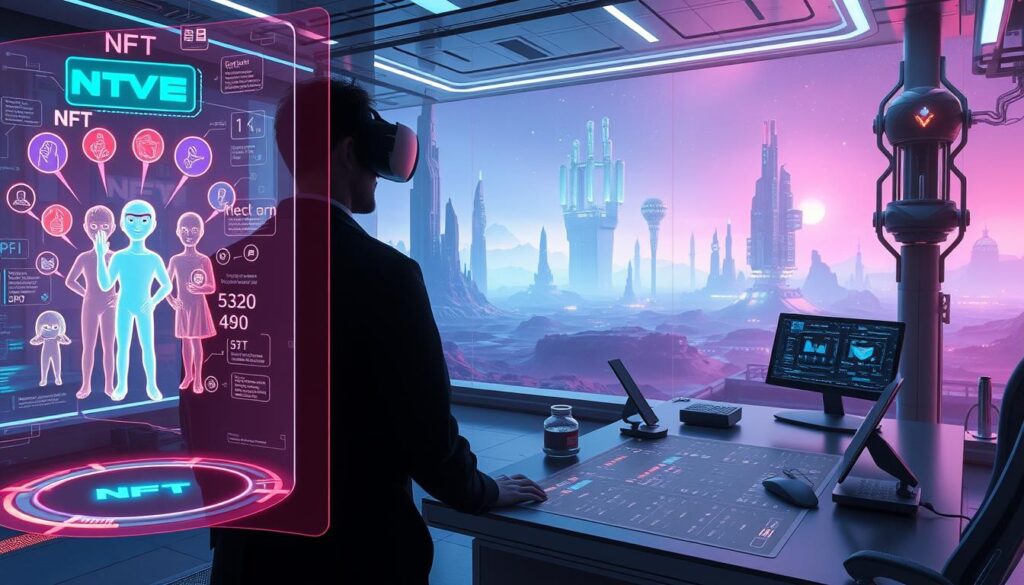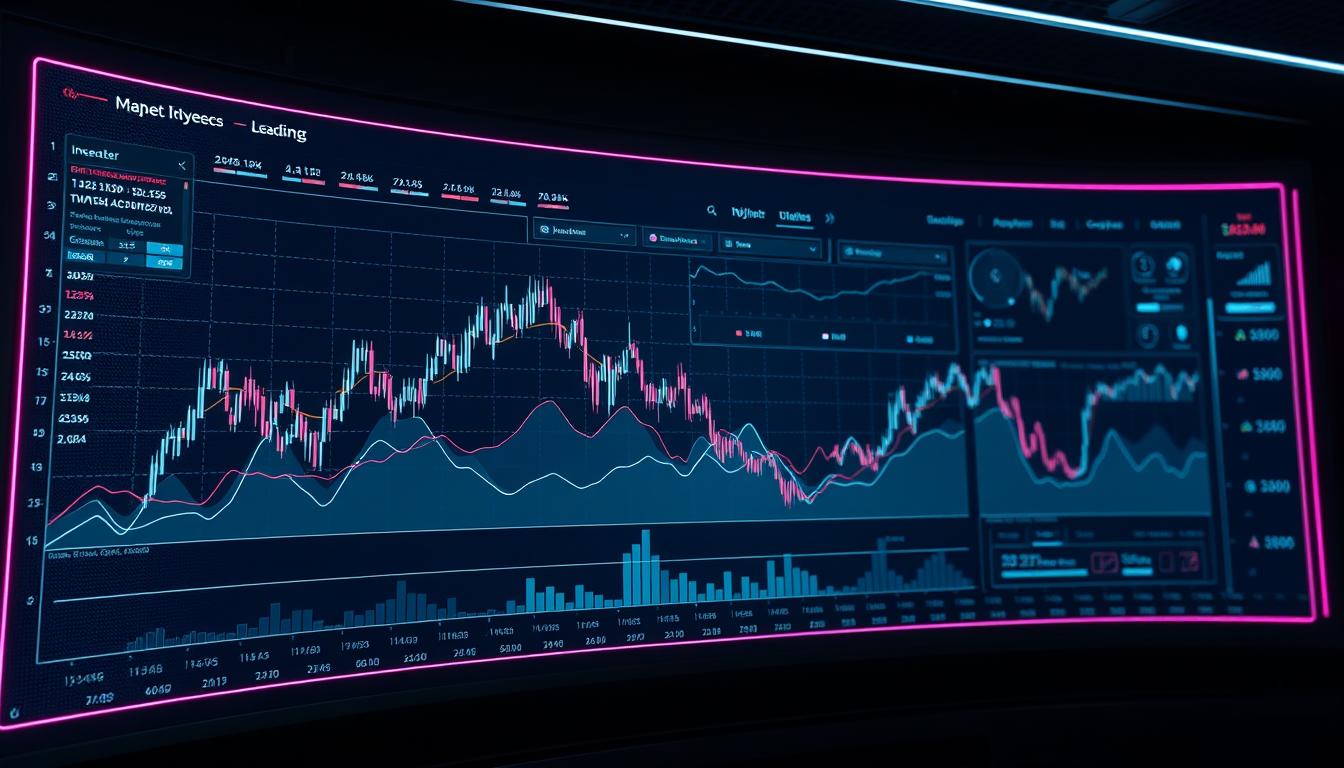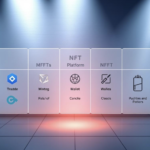Now Reading: Blockchain Gaming NFT Marketplace Platform Explained
- 01
Blockchain Gaming NFT Marketplace Platform Explained
Blockchain Gaming NFT Marketplace Platform Explained

Digital ownership in interactive entertainment is evolving rapidly. New systems now let players truly own in-game items, characters, and achievements through unique digital certificates. These certificates use cutting-edge technology to prove authenticity and enable secure trading.
Modern trading hubs for virtual goods combine safety with user-friendly features. They allow seamless transactions across different gaming worlds while protecting user data. Developers can create thriving economies, and collectors gain new ways to acquire rare items.
This guide explores how these systems work and why they matter. We’ll look at real cases where players earned real value from their in-game efforts. You’ll also learn how creators build sustainable ecosystems that benefit everyone involved.
Key Takeaways
- Digital certificates enable true ownership of virtual items
- Secure trading systems protect user assets across games
- Developers can create player-driven economies
- Cross-game compatibility increases item value
- Real-world examples show measurable success
Understanding Blockchain and NFT Gaming Marketplaces
The landscape of virtual economies has undergone a dramatic shift. New systems now empower users with unprecedented control over their digital possessions. This transformation stems from technological advancements that redefine value exchange in interactive environments.
The Evolution of Distributed Ledger Technology in Play
Early virtual goods existed solely within closed ecosystems. Modern solutions break these barriers through decentralized networks. Platforms like Planet IX demonstrate how entire worlds can operate on transparent ledgers, enabling cross-environment asset transfers.
Players now build portable inventories that retain value beyond individual titles. This shift creates economic opportunities previously unavailable in traditional systems. Developers benefit from sustainable models where user engagement directly fuels ecosystem growth.
Redefining Possession Through Digital Certificates
Specialized trading hubs verify item authenticity through immutable records. Every transaction leaves a permanent trail, eliminating disputes about provenance. Users gain true ownership rights comparable to physical property.
These systems enable novel financial models like fractional investments and collateralized loans. A sword earned in one game might become part of a diversified portfolio. This flexibility attracts both casual players and serious collectors, creating vibrant communities around rare digital artifacts.
Key Features Driving NFT Marketplace Success
Modern digital trading hubs thrive through specialized capabilities that balance technical excellence with user needs. These systems combine robust infrastructure with creative solutions, empowering creators and collectors alike.

Innovative Wallet Integration and Secure Transactions
Top platforms simplify asset management through versatile wallet connections. Services like DTTD enable mobile-first access, letting users manage collections through social interfaces. Multi-layered security protocols automatically detect suspicious activity while maintaining transaction speed.
| Feature | DTTD | LYNC | ChainSafe |
|---|---|---|---|
| Wallet Support | 15+ options | 10+ chains | Cross-chain |
| Fraud Detection | Real-time AI | Two-factor | Smart contracts |
| Transaction Speed | 3 seconds | 5 seconds |
Advanced Tools for Creators
Development suites now offer drag-and-drop interfaces for building digital collections. LYNC’s infrastructure reduces deployment time to 120 seconds, while ChainSafe provides white-label solutions through their marketplace toolkit. These resources help teams focus on creativity rather than coding.
Community Support and Cross-Platform Access
Successful hubs prioritize user interaction through social forums and governance voting. Cross-chain compatibility lets collectors trade assets across multiple ecosystems, increasing liquidity. Features like subscription models create recurring engagement while analytics dashboards track collection values in real-time.
blockchain gaming NFT marketplace platform
Next-gen trading hubs offer more than just buying and selling. These systems combine robust tools with creative financial models, transforming how users interact with virtual items. Leading services like Dagora and Alpha Quark demonstrate this shift through cross-network compatibility and asset-backed loan options.

Core Functionalities and Unique Selling Points
Sophisticated listing systems let creators mint items with customizable metadata and pricing tiers. Users filter inventories by rarity, network, or in-game utility through intuitive search tools. Integrated environments allow direct interaction with collectibles, merging commerce with gameplay experiences.
Cross-chain functionality reduces transaction costs while expanding liquidity pools. Social trading mechanics enable crowd-sourced valuations and shared collection strategies. Some ecosystems even let users borrow against their digital holdings, unlocking new financial flexibility.
Real-time analytics dashboards track portfolio performance across multiple virtual worlds. These tools help collectors make data-driven decisions while showcasing items in 3D galleries. Services like Superb prioritize accessibility, ensuring both casual users and professional traders find value in their offerings.
Innovative Tools and Community Engagement in the Metaverse
Virtual ecosystems now offer sophisticated solutions that connect technical capabilities with user creativity. Developers and collectors gain powerful resources to interact with digital assets in groundbreaking ways. These advancements create dynamic environments where technology and community fuel mutual growth.

Cutting-Edge API and Lending Solutions
Modern API solutions empower creators to embed trading features directly into web3 games. Alpha Quark’s system lets players swap items mid-game through five lines of code. This integration maintains engagement while expanding economic opportunities.
Lending protocols revolutionize asset utilization. Users borrow funds against rare digital items without selling them. Platforms automatically assess collateral value through AI-driven rarity metrics, ensuring fair loan terms.
| Feature | Alpha Quark | Decentraland | DTTD |
|---|---|---|---|
| API Support | Game SDK | VR Toolkit | Mobile SDK |
| Lending Options | Asset-backed | Land leases | Quick loans |
| Metaverse Access | Partial | Full | Bridge |
Building and Managing Digital Collections
Advanced tools simplify organizing related collections across platforms. Automated systems grade item rarity and track value fluctuations. Decentraland users showcase holdings in 3D galleries visible across devices.
Community features enable collaborative curation through shared vaults and voting systems. Cross-platform compatibility lets collectors manage web3 assets via mobile apps or VR headsets. Real-time alerts notify users about market shifts or collection milestones.
Educational hubs help newcomers navigate complex systems. Interactive tutorials explain portfolio management while forums connect enthusiasts. These resources foster informed participation in evolving digital economies.
Benefits for Developers, Players, and NFT Collectors
New economic models empower diverse groups in virtual spaces. These systems create shared value through secure infrastructure and innovative tools. Let’s explore how different stakeholders gain unique advantages.

Enhanced Security and Transparent Transactions
Advanced protection measures guard digital assets and financial interactions. Multi-signature wallets require multiple approvals for transfers, reducing unauthorized access risks. Real-time fraud detection systems scan transactions across networks, flagging suspicious patterns instantly.
| Security Feature | Benefit | Example |
|---|---|---|
| Encrypted Ledgers | Prevents data tampering | LYNC’s audit trails |
| AI Monitoring | Blocks phishing attempts | DTTD’s threat detection |
| Two-Factor Authentication | Secures account access | Alpha Quark’s login system |
Developers save time through ready-made tools for NFT marketplace development. Pre-built APIs enable quick integration of trading features into virtual worlds. This accessibility helps teams focus on creative elements rather than technical hurdles.
Players control their digital possessions completely. Earned items can be sold across multiple environments or used as loan collateral. Collectors access detailed analytics showing item rarity trends and historical values.
Flexible payment options cater to global audiences. Users choose between crypto payments or credit card transactions. Reward programs offer governance tokens, letting active participants influence platform decisions.
Final Thoughts on the Future of Digital Gaming Assets
The digital asset landscape is entering a transformative era driven by technological innovation. Cross-chain compatibility will erase technical barriers, letting collectors trade items across multiple ecosystems seamlessly. Users gain unprecedented flexibility as virtual inventories become portable between different worlds.
AI-driven tools will personalize experiences through smart recommendations and predictive analytics. Imagine systems that auto-adportfolios based on market trends or suggest undervalued items. These features empower both casual enthusiasts and professional traders.
Immersive VR integrations will revolutionize how people interact with digital collections. Picture 3D galleries where users showcase rare items or test virtual prototypes in simulated environments. Such innovations blend commerce with creative expression.
New financial models like fractional ownership and asset-backed loans attract mainstream interest. These opportunities let participants unlock value without selling entire collections. Regulatory progress will build trust, encouraging institutional involvement while protecting users.
Sustainability efforts address environmental concerns through energy-efficient networks. As adoption grows, these advancements create inclusive ecosystems where creativity, strategy, and ownership converge. The future belongs to platforms balancing innovation with responsibility.












